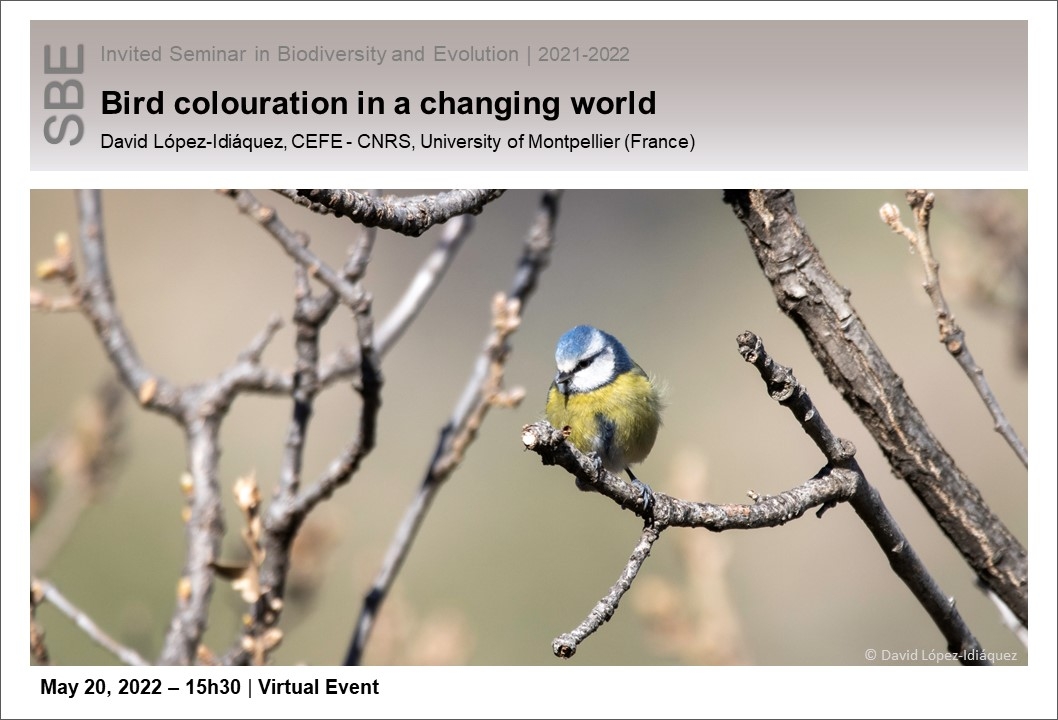Bird colouration in a changing world
20 May 2022 - David López-Idiáquez, CEFE - CNRS, University of Montpellier (France) | 15h30 | Virtual Event

INVITED SEMINAR IN BIODIVERSITY AND EVOLUTION
The presence of conspicuous traits has drawn the attention of scientists and non-scientists alike for a long time. Since the development of sexual selection theory, biologists have conducted theoretical and empirical work to explain their presence. Currently, we can say that their function is rather well understood, as they work as signals in intra- and inter-sexual contexts conferring honest information about individual quality to mates and competitors. Less information, however, exists on how the expression of these traits is driven by the environmental conditions, and especially the impacts of human related changes (e.g. climate change or urbanisation) on them are virtually unknown. Yet, understanding how these factors modulate ornament expression is important as they can also impact the capacity of populations to adapt to the changes in the environment. Here, I will try to shed some light on these issues by presenting recent results on the effects of climate change and urbanisation on the colourations of blue (Cyanistes caeruleus) and great tits (Parus major). In brief, the results of these studies suggest that human-related changes such as climate change and urbanisation are having an impact on the ornamental colourations of these species and call for further research on the mechanisms behind these changes and the consequences they may have for the viability of the populations.
David López-Idiáquez is a postdoctoral researcher at the Centre d’Écologie Fonctionnelle et Évolutive (CEFE-CNRS) in Montpellier (France) and the University of the Basque Country (UPV/EHU) in Leioa (Spain). He is interested in understanding how the variation in the environmental conditions drives trait evolution, with a special focus on ornamental colourations. David finished his PhD at the National Museum of Natural History of Madrid (MNCN-CSIC) working on the function and evolution of the melanin-based colouration of the common kestrel (Falco tinnunculus). Currently, after two short appointments at the Centre for the Study and Conservation of Raptors in Argentina (CECARA) and the Complutense University of Madrid (UCM), he is developing his postdoctoral project on the eco-evolutionary dynamics of the ornamental traits of the blue tits both at CEFE and UPV/EHU.
[Host: Rita Covas, Animal Sociality - SOCIALITY]